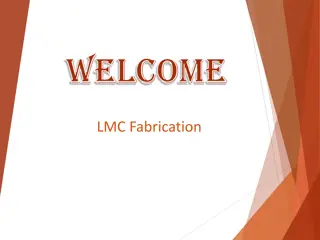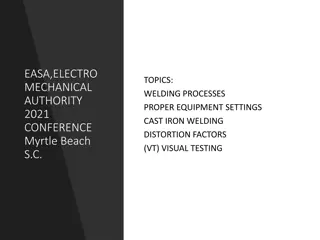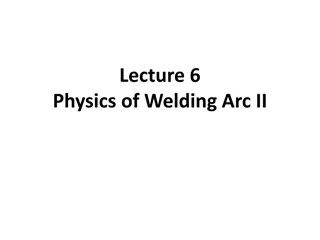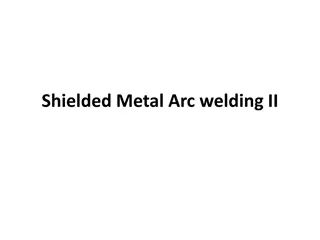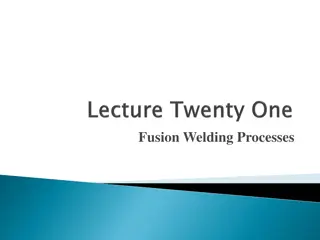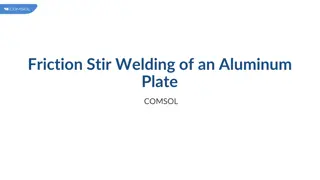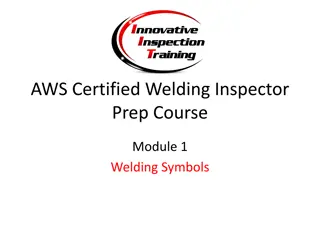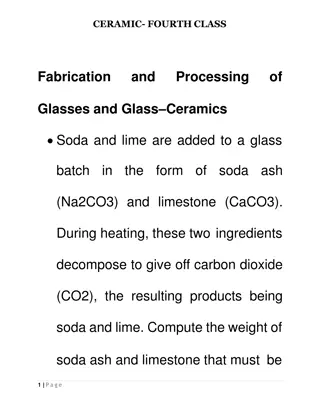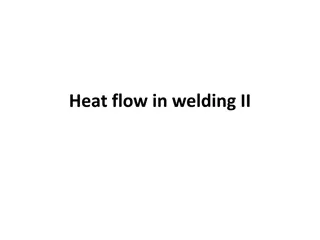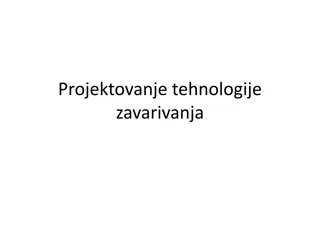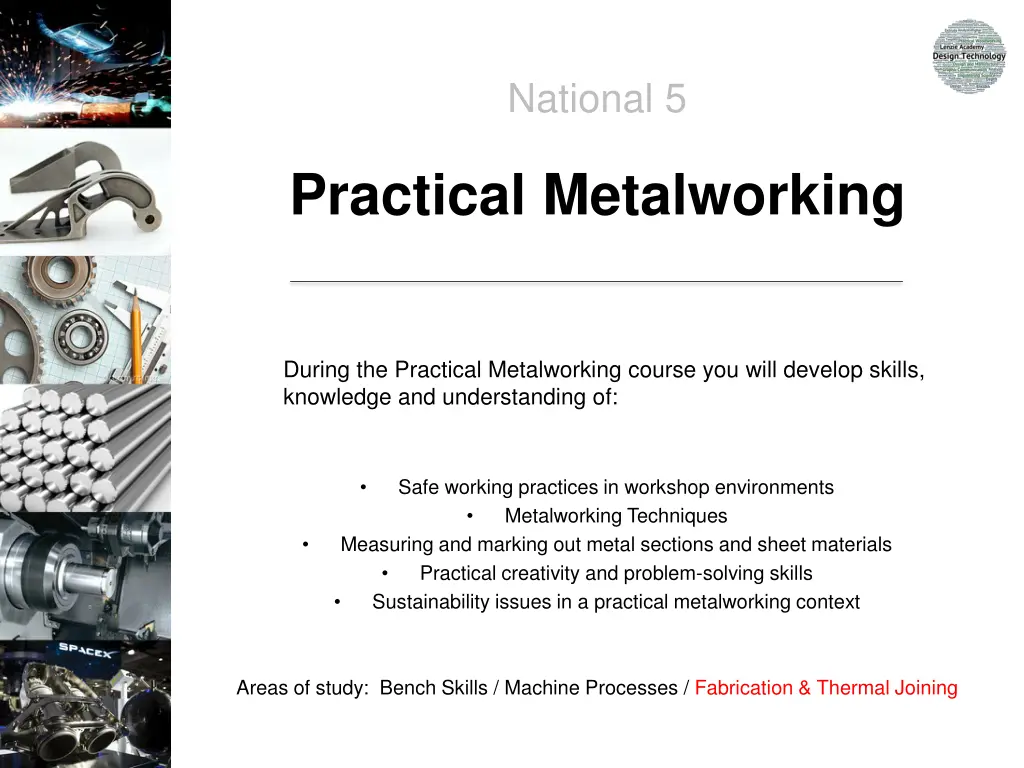
Practical Metalworking: Thermal Joining & Fabrication Techniques
Explore the world of practical metalworking with a focus on thermal joining and fabrication techniques. Learn about spot welding, safety measures, equipment usage, and step-by-step instructions for achieving successful welds. Enhance your skills in metalworking and problem-solving while understanding the importance of safe working practices and sustainability in this dynamic field.
Download Presentation

Please find below an Image/Link to download the presentation.
The content on the website is provided AS IS for your information and personal use only. It may not be sold, licensed, or shared on other websites without obtaining consent from the author. If you encounter any issues during the download, it is possible that the publisher has removed the file from their server.
You are allowed to download the files provided on this website for personal or commercial use, subject to the condition that they are used lawfully. All files are the property of their respective owners.
The content on the website is provided AS IS for your information and personal use only. It may not be sold, licensed, or shared on other websites without obtaining consent from the author.
E N D
Presentation Transcript
National 5 Practical Metalworking During the Practical Metalworking course you will develop skills, knowledge and understanding of: Safe working practices in workshop environments Metalworking Techniques Measuring and marking out metal sections and sheet materials Practical creativity and problem-solving skills Sustainability issues in a practical metalworking context Areas of study: Bench Skills / Machine Processes / Fabrication & Thermal Joining
National 5 Practical Metalworking Unit 3: Thermal Joining & Fabrication - Spot Welding Safety Rating: (Med - High)
Thermal Joining & Fabrication Spot Welding Spot welding is principally used as a method of joining sheet steel. The process is used extensively in the Automobile industry where the spot welding process can be automated with the aid of large robots. However, spot welding can be undertaken in the school workshop on a much smaller scale.
Thermal Joining & Fabrication Spot Welding The spot welder we will use in the workshop is smaller in size when compared to its industrial robotic counterparts but it can be just as dangerous if not used correctly. Before use you must always wear the correct PPE. All thermal joining & fabrication work will require the use of a leather apron and leather gauntlets. Goggles Gauntlets Leather Apron
Thermal Joining & Fabrication Spot Welding It is very important to know all parts of the spot welder and their function before use. The lever is pushed down to bring the copper electrodes together to create the weld. The weld timer can be set to ensure the weld time is correct for the thickness of material. LEVER / HANDLE WELD TIMING DIAL POWER CABLE COPPER ELECTRODES ON/OFF SWITCH
Thermal Joining & Fabrication Spot Welding Step 1: The two pieces of metal to be joined must be cleaned thoroughly, rust, paint, grease etc must be removed. Use a piece of emery cloth to clean the metal. Step2: Set the weld timer on the spot welder to suit the material thickness you are using. The thicker the sheet the longer it will take. Step 3: Clamp the material between the copper electrodes by pushing down the handle. Hold the handle down until the weld cycle is finished. Repeat the process if required. Step 4: Remove the metal and allow to cool. ALWAYS REMEMBER TO WEAR HEATPROOF GLOVES WHEN HANDLING THE METAL DURING AND AFTER WELDING!
Quiz Questions 12 Record answers in your notes jotter 1. Spot welding is mostly used to join what metal? 2. What metal are the electrodes made from? 3. What PPE should be worn when operating the spot welder? 4. What industry commonly uses spot welding? 5. What must we do to the metal before spot welding? 6. Why would we need to adjust the weld timer dial?
Quiz Questions 12 Record answers in your notes jotter 1. Spot welding is mostly used to join what metal? Steel 2. What metal are the electrodes made from? Copper 3. What PPE should be worn when operating the spot welder? Goggles, heat proof gloves, leather apron 4. What industry commonly uses spot welding? Automotive Industry 5. What must we do to the metal before spot welding? Ensure metal is clean from paint, grease etc 6. Adjust to suit thickness of metal Why would we need to adjust the weld timer dial?



